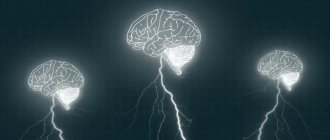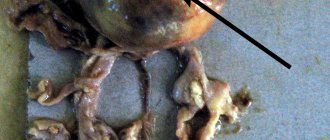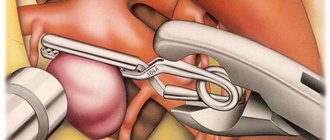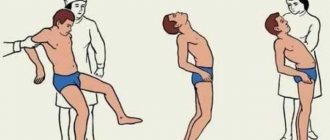Headache
Encephalitis
Tick-borne encephalitis
Polio
Hypercholesterolemia
23531 31 July
IMPORTANT!
The information in this section cannot be used for self-diagnosis and self-treatment.
In case of pain or other exacerbation of the disease, diagnostic tests should be prescribed only by the attending physician. To make a diagnosis and properly prescribe treatment, you should contact your doctor. Headache - causes, what diseases it occurs with, diagnosis and treatment methods. The basis of headaches is irritation of pain receptors located in:
- dura mater and cerebral vessels;
- periosteum of the skull, vessels of the soft tissues of the head, muscles.
The brain tissue itself does not contain pain receptors.
Types of headaches (cephalgia)
Headaches are divided into primary and secondary. A headache is considered primary if it is the main manifestation of a brain disease, such as in migraines and tension headaches.
Secondary headache is a symptom of other disorders, for example, head trauma, chronic cerebral ischemia, viral diseases, diseases of the cervical spine, etc.
Let's look at the four most common types of headaches.
Possible causes
Tension headache
Tension headache is the most common form of primary headache. Psycho-emotional stress, depression, anxiety and various phobias, overstrain of the muscles of the shoulder girdle - these are the main causes of tension headaches. Migraine headache
Migraines occur in women about three times more often than in men, and about 60-70% of all migraine cases in women are so-called menstrual migraines. However, the causes and mechanism of development of migraine attacks are not completely clear. At any age, in both men and women, migraine attacks can be provoked by emotional and physical overload, eating disorders, drinking alcohol, changes in weather conditions, sharp noise, strong odors, etc. Headache with colds
Headaches from colds are caused by hyperthermia and the damaging effects of microorganism toxins on brain cells. Headache in chronic cerebral ischemia
The cause of this pain, which is the most common secondary headache in elderly patients, is cerebral vascular pathology, in which blood circulation is disrupted and blood supply to brain tissue deteriorates.
The result is progressive brain dysfunction.
What diseases cause
tension headaches?
Tension headaches are caused by irritation of structures in the central nervous system (CNS) called the nociceptive system. Myogenic, stress, and psychogenic headaches are tension headaches.
Most often, tension headaches occur at a young and working age.
In cases of tension headaches, a person experiences bilateral, usually not strong, pressing and squeezing, monotonous and dull headaches. Attacks of such pain are accompanied by fatigue, nervousness, impaired appetite and sleep, and decreased performance. The duration of the attack is from 30 minutes to several days.
Migraine headache
Indicates only one disease - migraine, since attacks of such cephalgia have a peculiar character. Migraine pain is paroxysmal, throbbing, of moderate or severe intensity. It covers half of the head.
The pain may intensify with physical activity, tilting the head, and is often accompanied by nausea and vomiting.
Bright light, sharp sound, strong smell increase the pain. A migraine attack may be preceded by an aura, a collection of visual, auditory, olfactory or other neurological symptoms that lasts up to one hour.
Headache due to colds
Occurs in most acute and chronic diseases of the upper and lower respiratory tract caused by bacteria or viruses. In some cases, the intensity of such cephalgia correlates with the severity of fever, severity of cough, sore throat and other symptoms. The pain most often spreads throughout the head. Headache in chronic cerebral ischemia
The concept of chronic cerebral ischemia includes: discirculatory or vascular encephalopathy (slowly progressive cerebrovascular accident), cerebrovascular insufficiency (pathology of cerebral vessels), vascular dementia (a disorder that causes organic damage to the brain). In the clinical picture of chronic cerebral ischemia, dizziness, decreased cognitive function, emotional lability (unstable mood), motor-coordination disorders, and perception disorders (tinnitus, “floaters” before the eyes) become indispensable companions of headaches. Headaches are usually not severe, spread over the entire head, and last for a long time. Diagnostics and examinations
Tension headache and migraine headache, headache with colds
The diagnosis is made by a neurologist based on anamnesis and assessment of the patient’s complaints. Headache in chronic cerebral ischemia
Radiation examination is key for chronic cerebral ischemia (ultrasound Dopplerography of cerebral vessels)








